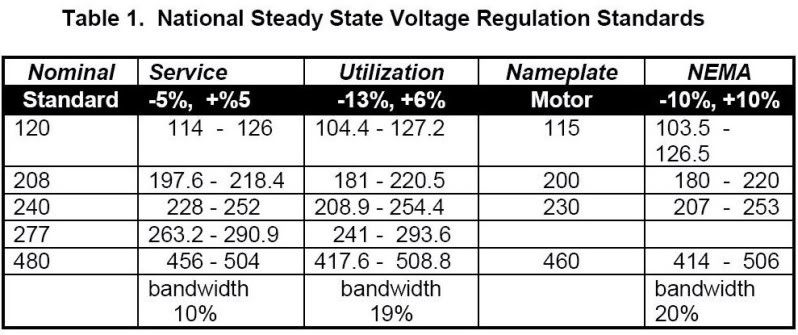Was working on a 480 system, but have been reading a steady 503 volts on this motor. It is unusual but the motor is running still. Only time I run into voltage above the nominal is during peak hours and even then its very short lived.
Did a house once and it had a steady 250volts for a 240volt system.
Have any of you run into systems where the volts were higher than the nominal at a steady rate?
While not very common in residential I have had a few cases and in each case it was the same problem, a fault between couple of turns in the primary winding that reduces the turn ratio that causes the secondary voltage to rise, since the fault is just between the winding turns and not to ground or another phase it doesn't cause any circuit protection to open and can go unnoticed for a while with the only results being shorter life of incandescent lamps if the voltage is not to high, but I did have one where the voltage was over 284 volts line to line leaving a line to neutral voltage of 142 volts which did damage some electronic equipment as well as the furnace main control board.
Now for 3-phase industrial or commercial I would be more leaning toward a mis set tap if this voltage was close to the same on all three phases, the only legit reason I could see for this would be that at some point in the past there was a higher load that cause a low voltage problem and a lineman reset the tap to account for it but this load stopped being used or the utility upgraded conductors ahead of this transformer but didn't make sure to reset taps on down stream transformers, if the voltage is only from one phase which will show up between two phases when line to line readings are taken but line to neutral will only show it on one phase, then suspect a bad transformer primary as above.
What does sound strange is finding this at peek times when higher loads are used, as this problem should drop in voltage depending upon how stiff the supply is, but it would be steady for the most part if the fault between the windings makes a good connection and doesn't open from the vibration of the transformer.
If it is a NEMA motor they are designed to operate at +-10% of their NP voltage.
You stated that it was a 480v system but overlooked what the actual motor NP voltage was. It is common for motors to be 460v. If so 460x110% is 506V. As such 503v would just make it.
I think motors will tend to handle higher voltages much better then under voltage, lower voltages will cause more damaging pole slip and the motor will pull a much higher amperage, while higher voltages is not good the current will ramp up at much slower rate as the percentage of over volts goes up, universal (AC/DC brush motors) will exhibit a higher RPM on over voltage but generally handle it fairly well as we use to use veriac auto transformers to do just that back before we had adjustable speed drills.
But while its not a really bad problem it should be addressed with the utility if the transformers are utility owned, if not then a primary reading should be made to determine if you have a bad transformer or the wrong tap set or a higher then normal primary, so it can be corrected as over all life of equipment can be shortened and if this is a Y supply that has lighting on it it can shorten the life of the lamps and ballast.


